|
Tower Square-
Tunstall:
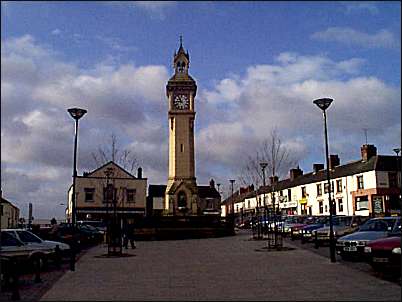
Tower Square - looking westward
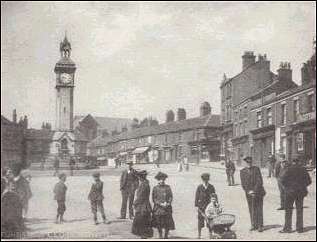
Postcard of Tower
Square
c.1900
In the centre is the clock tower,
erected in 1893, in a yellowish brick. The tower stands on the site
of the original town hall. It was built by public subscription to
honour Sir Smith Child.
Behind the tower, on the left is
the old Methodist Chapel. Piccadilly Street runs to the left and
Paradise Street to the right.
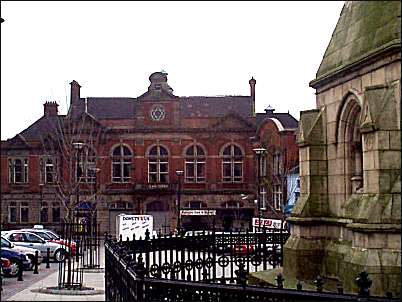
Tunstall's second
Town Hall - completed in 1885
At the east end of
Tower Square is the town hall, replacing the original town hall
which was in the centre of Tower Square (then Market Square) - the
original town hall was demolished in 1892.
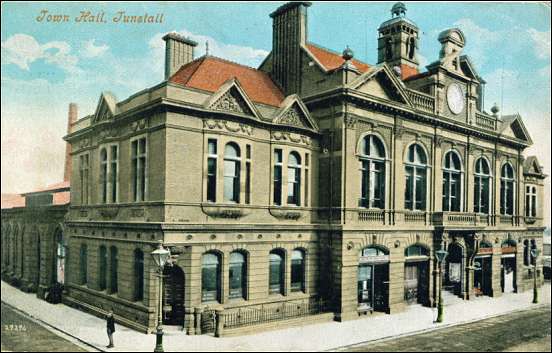
The replacement town
hall, designed by
A. R. Wood, has a Renaissance-style facade of nine bays. The
first floor, of brick with stone dressing, features an intricate
dentil frieze, with richly patterned, moulded tiles below. The first
floor is finished with ashlar stone.
The centre attic
displays a Star of David. Behind the town hall is a covered market.
Unlike the other Potteries town halls there are shop frontages
incorporated in the ground floor.
Tunstall was an early centre of Methodism in the Potteries. The
only surviving early chapel in the town stands at the west end of
Tower Square.
In 1823 John Ridgway acquired land from Walter Sneyd. lord of the
manor, where a chapel called Mount Tabor was built in 1824. The rest
of the site was filled with shops facing Market Square and two
houses behind in Paradise Street. The rent from these properties was
used to support the chapel. The chapel was sold in 1852 and replaced
by a new chapel in Victoria Terrace (now Lascells Street) in 1857.
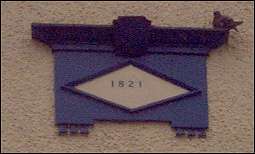
1821 date stone
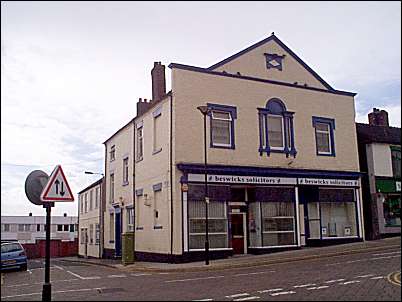
1821
chapel of the Methodist New Connexion
now (2001) Beswicks Solicitors
To the left is
Piccadilly Street
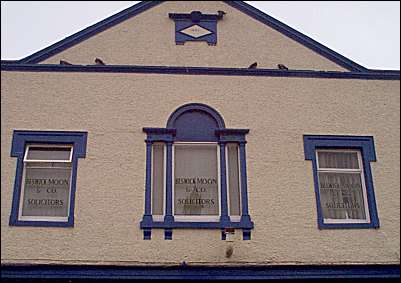
Venetian Window - typical of Potteries Architecture
|
see
architecture |

|
![]()
![]()
![]()